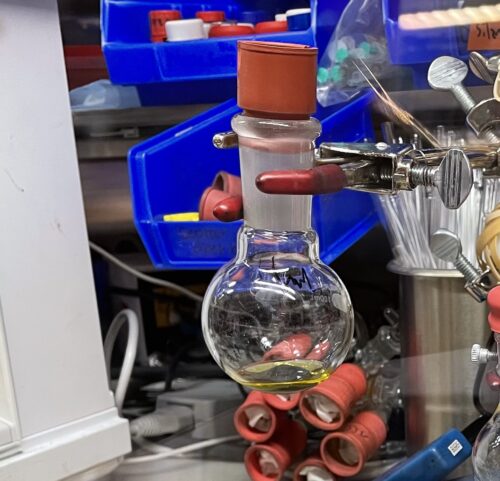Image courtesy of Holland research laboratory.
From DNA to colored dyes, carbon-nitrogen (C-N) bonds, are everywhere. However, scientists find it difficult to efficiently synthesize these bonds from common starting materials. What if we could make these bonds directly from nitrogen gas, which makes up most of Earth’s atmosphere?
Nitrogen gas (N2) is abundant, but it is also unreactive, so C-N bond formation usually first requires the energy-intensive reduction of N2 to ammonia. But three years ago, Patrick Holland’s group in the Department of Chemistry at Yale discovered a new way to incorporate N2 into carbon-containing, or organic, compounds using an iron complex. The researchers knew that they had discovered an innovative method to make C-N bonds without the help of ammonia, but they weren’t sure how it worked.
Samuel Bhutto, then a graduate student in the Holland lab, isolated some of the reaction intermediates and their structures, then suggested that this phenomenon happened in a single-step reaction. Another graduate student, Reagan Hooper, used computation to determine that bonds break and form simultaneously in the transition state. All signs pointed towards the same explanation. “The high oxidation state of iron […] is what drives the insertion by giving the complex an unusual electronic structure,” Bhutto said. Because of how the iron atom interacts with N2, a nitrogen atom can accept electrons from a nearby organic compound and create a new C-N bond.
Now that we know how this kind of reaction works, the Yale scientists hope to generalize this tool to make many kinds of C-N bonds. Currently, the synthesis of many industrial chemicals like surfactants uses a pathway that inserts carbon monoxide (CO) into organic molecules, and doing the same with N2 would be a major innovation. “If we can do half that much with nitrogen, which is more abundant and less toxic than CO, then that would be great,” Holland said.

